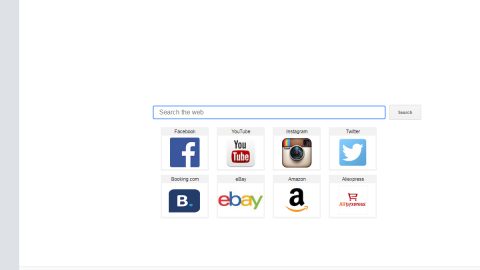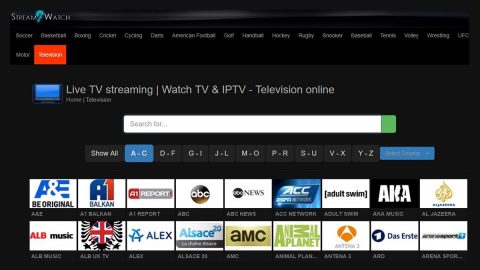What is Microsoft Edge virus scam? And how does it work?
Microsoft Edge virus scam is a yet another deceiving alert that pushes users to believe that their computers are infected with a “serious virus” and that they must call a tech support number to get rid of the virus. However, none of it is true so you should know better than to fall for these tricks. The Microsoft Edge virus scam is nothing but another tech support scam that’s displayed on malicious domains. If you happen to get redirected into one, you will see a pop-up on your Microsoft Edge browser with a message that states:
“Firewall Warning:
Your computer has a serious virus!
If you see this message, you should call Support at
(855) 404 3522
DATA AT RISK:
1 Your credit card details and banking information.
- Your e-mail password and other passwords.
- Your Facebook, Skype and other chat logs.
4.Your private photos and sensitive files.
- Your webcam could be accessed remotely by hackers.
Technicians are standing by to provide your FREE DIAGNOSIS
& PRIORITY assistance removing this virus from your computer.”
As scary as the message may seem, you shouldn’t believe it as it’s just a ploy to get you to call the fake tech support number which is (855) 404 3522. Calling this fake tech support number would be a huge mistake and one that you’d regret right away as the people behind the line are not really technicians that might only convince you to install highly suspicious software or force you to pay for an unnecessary service and worse, unknowingly grant them remote access to your computer. So instead of calling this fake bogus tech support number, you have to close the tab of the browser that’s displaying it and if you’re unable to do so, close the browser altogether and if you once again find it hard to close the browser, you can end its process in the Task Manager. However, this is just a temporary fix so you have to get to the root cause of the issue which may be an adware program installed in your computer that’s causing the appearance of the bogus alert.
How does Microsoft Edge virus scam circulate the web?
The Microsoft Edge virus scam circulates the web via misleading ads or as mentioned, adware programs. These adware programs are part of software bundles and are distributed on free sharing sites. To avoid infiltration of adware programs, you have to opt for the Advanced or Custom setup rather than the quick one.
Delete the Microsoft Edge virus scam using the given removal guide below as well as the ad-supported program behind it from your PC.
Step 1: Close the tab or the browser where you see the Microsoft Edge virus scam. On the other hand, if your browser is forced to go into full-screen mode because of the fake alert, tap F11 in your keyboard to exit full-screen mode.
Step 2: After that, try to close the browser manually. If you find it hard to do so, close the browser through the Task Manager.
Step 3: Tap the Ctrl + Shift + Esc keys to launch the Task Manager.
Step 4: After opening the Task Manager, go to the Processes tab and look for the affected browser’s process and end it by clicking End task or End Process.

Step 5: Close the Task Manager and reset all the affected browsers to default.
Internet Explorer
- Open Internet Explorer.
- Tap Alt + T and select Internet options.
- Click the General tab and then overwrite the URL under the homepage section.
- Click OK to save the changes.
- Now switch to the Advanced tab and click the Reset button.
- Then check the box for “Delete personal settings” and then click Reset again.
Google Chrome
- Launch Google Chrome, press Alt + F, move to More tools, and click Extensions.
- Look for any other unwanted add-ons, click the Recycle Bin button, and choose Remove.
- Restart Google Chrome, then tap Alt + F, and select Settings.
- Navigate to the On Startup section at the bottom.
- Click on Advanced.
- After that, click the Reset button to reset Google Chrome.
Mozilla Firefox
- Open the browser and tap Ctrl + Shift + A to access the Add-ons Manager.
- In the Extensions menu Remove the unwanted extension.
- Restart the browser and tap keys Alt + T.
- Select Options and then move to the General menu.
- Overwrite the URL in the Home Page section.
- Tap Alt + H to access Help.
- Next, select “Troubleshooting information” and click “Refresh Firefox” at the top of the page.
- Now click “Refresh Firefox” again to confirm the reset.
Step 6: Tap the Win + R keys to open Run and then type in appwiz.cpl to open Control Panel to uninstall the adware program behind the fake alert.
Step 7: Look for the adware program or any unfamiliar program under the list of installed programs and once you’ve found it, uninstall it.

Step 8: Close the Control Panel and tap the Win + E keys to open File Explorer.
Step 9: Navigate to the following directories and look for the adware installer like the software bundle it came with as well as other suspicious files and delete them.
- %USERPROFILE%\Downloads
- %USERPROFILE%\Desktop
- %TEMP%
Step 10: Close the File Explorer and empty your Recycle Bin.
To make sure Microsoft Edge virus scam is completely deleted as well as the adware program behind it, you need to use an efficient program like [product-name]. To use it, follow the advanced steps below:
Perform a full system scan using [product-code]. To do so, follow these steps:
- Turn on your computer. If it’s already on, you have to reboot
- After that, the BIOS screen will be displayed, but if Windows pops up instead, reboot your computer and try again. Once you’re on the BIOS screen, repeat pressing F8, by doing so the Advanced Option shows up.
- To navigate the Advanced Option use the arrow keys and select Safe Mode with Networking then hit
- Windows will now load the SafeMode with Networking.
- Press and hold both R key and Windows key.

- If done correctly, the Windows Run Box will show up.
- Type in the URL address, [product-url] in the Run dialog box and then tap Enter or click OK.
- After that, it will download the program. Wait for the download to finish and then open the launcher to install the program.
- Once the installation process is completed, run [product-code] to perform a full system scan.

- After the scan is completed click the “Fix, Clean & Optimize Now”button.













